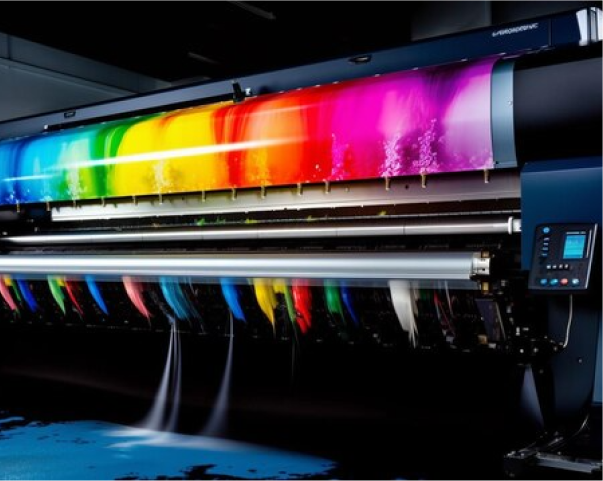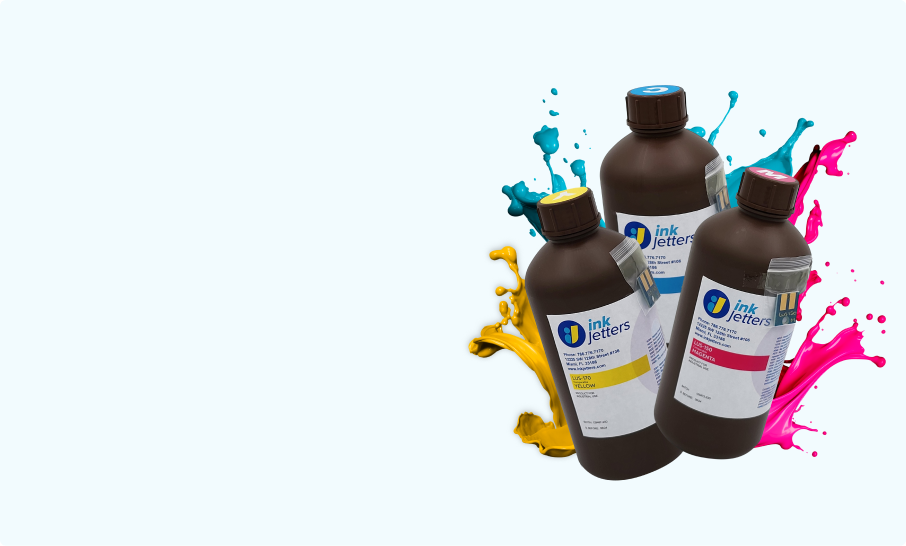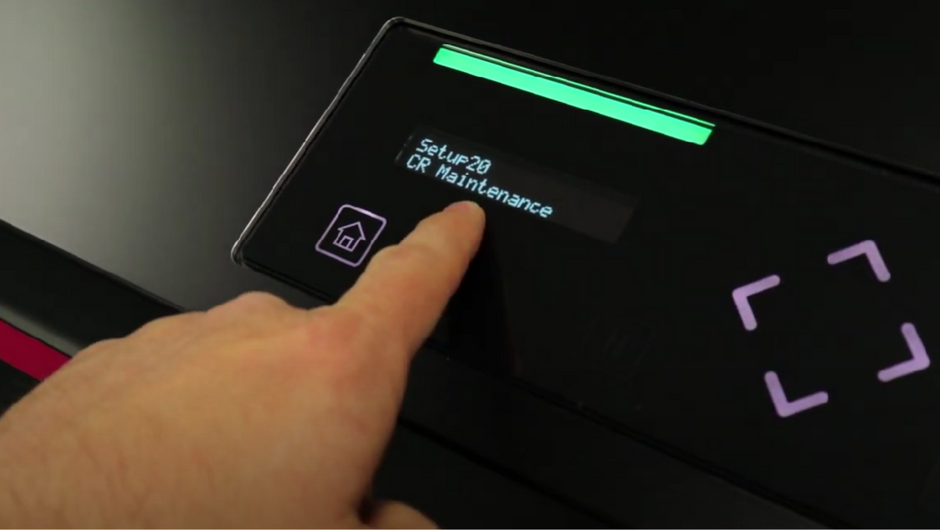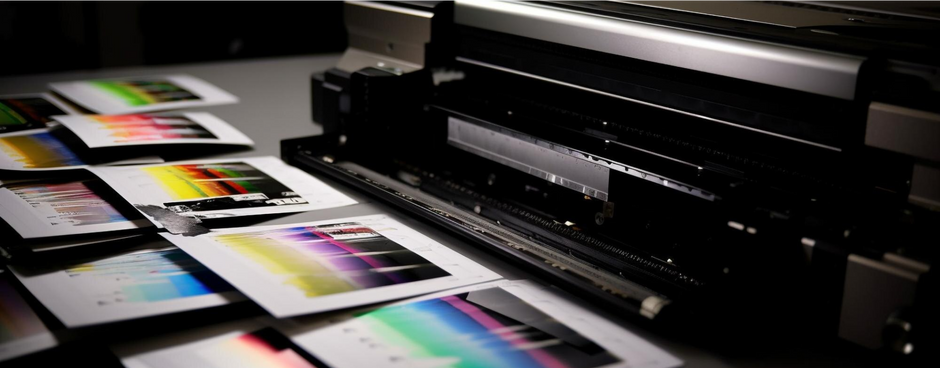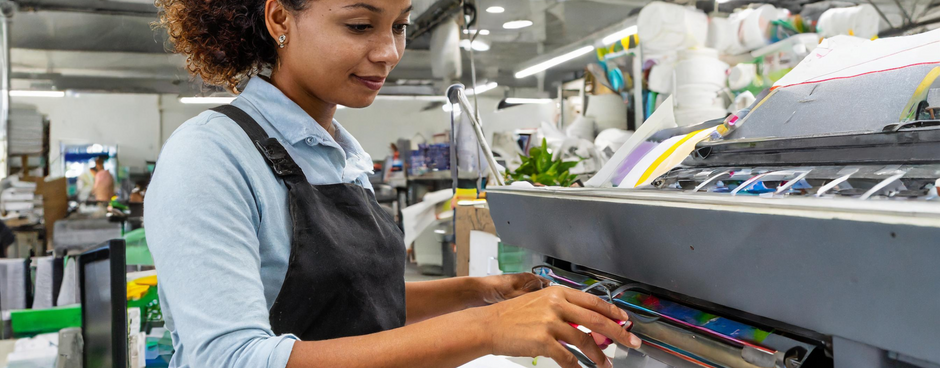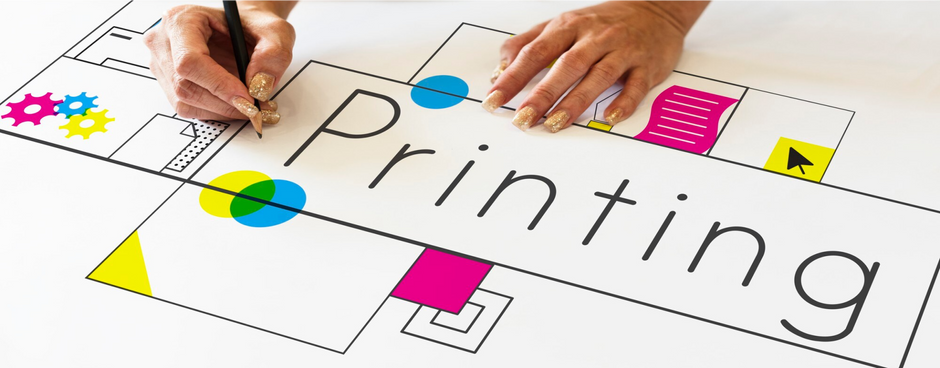Whether you are starting on a journey in promotional advertising, fine art photography, or the apparel business, one essential tool you'll need is a large-format printer. This will play an important role in bringing your creative visions to life. In this article, we'll explore the importance of large-format printers, the various technologies available, and the types of printers that best suit your needs. Get ready to discover how investing in the right large-format printer can propel your advertising business to new heights of success.
Large format printers, also known as Wide format printers, represent a cornerstone of modern printing technology, offering unparalleled versatility and capability in producing oversized prints across various industries. These printers support a maximum print roll width between 18" and 100" and are indispensable tools in visual communication.
The global Large Format Printers Market Growth will rise considerably during the forecast period, between 2021 and 2028. The global Large Format Printers market was valued at USD 6922.2 million in 2019 and it is expected to reach USD 8651.3 million by the end of 2026according to researchers from Market Reports World.
Some of the top global manufacturers in the Large Format Printers Market are Canon, Mutoh, Mimaki, Epson, HP, Roland, Ricoh, Xerox, Kyocera, etc.
What are Large Format Printers?
Large format printers are printing devices that produce prints larger than the standard A4 or letter size. They are used to print wide-format materials, ranging from banners and posters to blueprints and billboards. These printers leverage advanced technologies to accommodate oversized media and deliver high-quality prints with precision and efficiency.
Classification of Large Format Printers
There are many classifications for Large Format Printers, based on different criteria, like Printing Technology, Printing Mechanism, Application, Substrate Compatibility, etc. In this article, we will describe two of the most important classifications which are technology and mechanism.
Large Format Printers by Printing Technology:
Wide format printers usually employ some variant of inkjet or toner-based technology to produce the printed image; each offering unique advantages. Here are the most used technologies used:
- Aqueous Inkjet Printing: This is the most common technology used in large format printers, inkjet printers employ droplets of water-based ink to create images on various substrates, allowing a high level of detail and making them easy to use and maintain. They offer great color accuracy and can accommodate a wide range of media types. This technology can be used for both indoor and outdoor items and is the preferred method for printing large-format photography, trade show printing, and other images that require a high level of detail.
- Solvent Inkjet Printing: is a versatile and durable method for producing high-quality large-format prints, particularly for outdoor signage and graphics. This printing technology utilizes solvent-based inks that contain pigments suspended in a volatile solvent carrier, the inks are applied onto the printing substrate, and the solvent ink adheres to the substrate and then evaporates, leaving behind the pigment particles, which become embedded into the material. The cons are that it requires proper ventilation and consideration of environmental impact, however, solvent printing remains a popular choice for applications that demand longevity and weather resistance.
- Dye-Sublimation Printing: Dye-sublimation printers work with a process where solid dye particles are converted into a gas without passing through a liquid phase.}, using a heat press that applies heat and pressure to transfer the dye from a specially coated transfer paper onto the substrate. This gas penetrates the surface of the substrate and bonds with the polyester fibers, creating a permanent and vibrant image. This technology produces vibrant, durable prints with smooth gradients, and is ideal for applications like textiles, signage, and promotional products. However, it has limitations, namely that the process only works with polyester fabrics or poly blends.
- UV Printing: utilizes ultraviolet (UV) light to cure or dry ink instantly upon contact with a printing substrate. The process involves jetting UV-curable ink onto the surface of the substrate. Once the ink is deposited, UV lamps positioned along the printing carriage emit intense UV light, triggering a chemical reaction in the ink that rapidly hardens or cures it, resulting in quick drying and adhesion to the substrate. UV printing can be done on both rigid and flexible materials. Some applications for UV printing are signage, pop displays, packaging, and interior décor.
- Laser Printing: While less common in large-format printing, laser printers utilize laser beams to transfer toner onto the printing surface. They produce sharp, high-resolution prints and are most used for printing technical drawings and engineering documents.
Large Format Printers by Printing Mechanism:
A different classification of large-format printers is distinguished by their printing mechanisms and capabilities. Here we will define popular terms like flatbed printers, roll-to-roll printers, and hybrid printers.
- Flatbed Printers: These printers feature a flat printing surface where rigid substrates are placed for printing. The printer's printheads move horizontally and vertically to apply ink directly onto the substrate. Flatbed printers are commonly used for printing on rigid materials such as wood, glass, metal, acrylic, and foam board, ideal for signage, decorative panels, and packaging. They offer versatile substrate compatibility, precise registration, and high-quality prints on rigid materials. However, they cannot print on curved surfaces and may have slower production speeds compared to roll-to-roll printers.
- Roll-to-Roll Printers: These printers use rolls of flexible materials, such as vinyl, fabric, or paper, fed through the printer for continuous printing. The substrate is unwound from a roll, printed upon, and rewound onto another roll. Roll-to-roll printers are used to print banners, posters, vehicle wraps, wallpaper, and flexible signage. They offer high production speeds, are suitable for long print runs, ability to print on flexible materials, but may have limitations in substrate thickness and rigidity.
- Hybrid Printers: These printers combine the capabilities of both flatbed and roll-to-roll printers into a single device. They can switch between printing modes, offering versatility in substrate compatibility and application possibilities. These printers are used for a wide range of applications, including packaging, signage, textiles, and specialty printing. The hybrid printers are great for their versatility in printing on both rigid and flexible materials, showing increased productivity. As a con, they have higher initial investment compared to flatbed or roll-to-roll printers and may require additional maintenance and training for operation.
Now that you have a more clear understanding of large-format printing technologies and printer types, you should know which type of printer to look for to bring your project to life. If you would like to learn more about the production process or would like to have a professional guide, at Inkjetters we have more than 15 years of experience to help you. Ask about our Wide-Format Consulting service and get started today.

